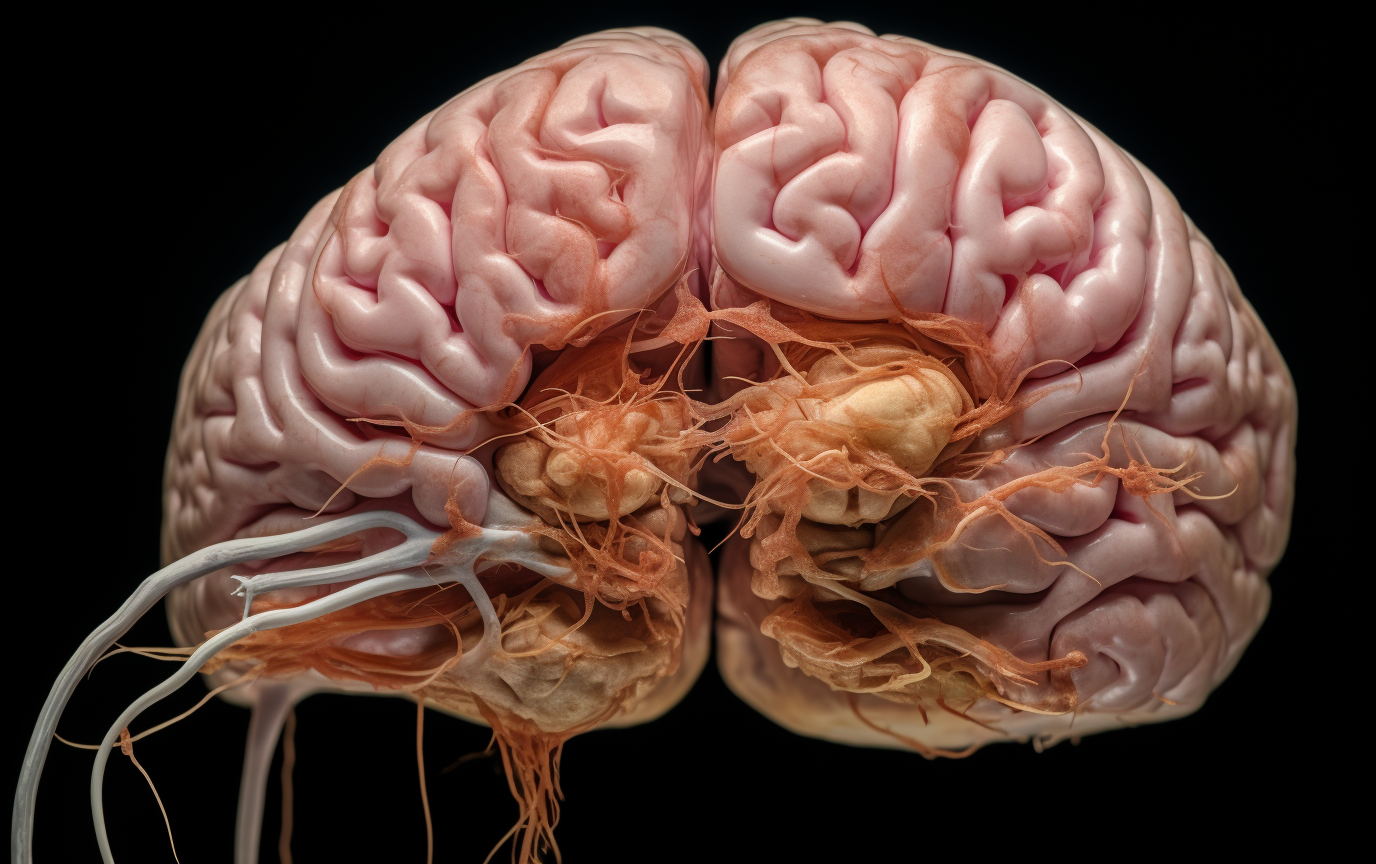
Welcome to a compassionate exploration of secondary cerebral lymphoma, a topic that requires understanding and empathy.
In this detailed guide, we’ll unravel the intricacies of secondary cerebral lymphoma, comparing it to its primary counterpart, exploring risk factors and causes, shedding light on symptoms and diagnosis, discussing treatment approaches, and touching on coping strategies.
Let’s embark on this journey together to demystify this condition and provide valuable insights.
What is Secondary Cerebral Lymphoma?
Secondary cerebral lymphoma is a type of cancer impacting the brain’s lymphatic system, differentiating itself from primary brain lymphomas by originating elsewhere in the body.
Unlike cancers that start within the brain, secondary cerebral lymphomas begin as cancer cells in other parts, traveling through the bloodstream or lymphatic vessels to settle in the brain.
This journey introduces complexities in diagnosis and treatment, requiring a comprehensive approach considering both the brain and the primary cancer site.
The distinction influences treatment strategies, emphasizing the need for a holistic perspective.
Understanding this unique manifestation underscores the intricacies of managing secondary cerebral lymphoma, demanding a nuanced approach to effective care.

Primary vs. Secondary Brain Lymphomas
Origins and development
- Primary brain lymphomas: These cancers originate within the brain itself, specifically in the lymphocytes, a vital component of the brain’s immune system.
- Secondary cerebral lymphomas: Unlike primary lymphomas, secondary ones have their roots elsewhere in the body.
Similarities and distinctions
- Shared characteristics: Both primary and secondary brain lymphomas involve the abnormal proliferation of lymphocytes and can lead to the formation of tumors in the brain.
- Critical differences: The fundamental distinction lies in where these cancers originate. Primary brain lymphomas commence within the brain, while secondary ones are a consequence of the spread of cancerous cells from other body parts to the brain.
Developmental dynamics
- Primary brain lymphomas: The entire developmental process of primary brain lymphomas occurs within the brain’s intricate network. The abnormal lymphocytes undergo uncontrolled growth, forming tumors that directly impact brain function.
- Secondary cerebral lymphomas: Secondary lymphomas follow a different trajectory. Cancer cells break away from their primary sites, navigate through the bloodstream or lymphatic system, and reach the brain, where they establish secondary tumors.
Risk Factors and Causes
Understanding the intricacies of secondary cerebral lymphoma requires a closer look at the amalgamation of genetic and environmental elements that contribute to its development.
Genetic predispositions
Individuals with a family history of lymphoma may find themselves at an elevated risk.
Genetic factors play a role in influencing susceptibility to lymphoma, and a familial connection amplifies the importance of vigilant monitoring.
Immunocompromised states
A compromised immune system becomes a pivotal player in the narrative of secondary cerebral lymphoma.
Those with a history of lymphoma or conditions that weaken the immune response face an augmented risk.
The immune system, when functioning optimally, acts as a defense against abnormal cell growth.
However, in compromised states, this defense mechanism weakens, potentially paving the way for cancerous developments.
Infections and underlying conditions
The risk of secondary cerebral lymphoma is notably influenced by specific infections and pre-existing medical conditions.
Infections such as the Epstein-Barr virus (EBV) and conditions affecting immune function can create an environment conducive to the development of secondary cerebral lymphoma.
Environmental influences
Beyond genetic and internal factors, external influences play a role.
Environmental factors such as exposure to certain toxins or radiation may contribute to the initiation and progression of secondary cerebral lymphoma.
The cumulative effect
Often, it’s the convergence of these factors that sets the stage for secondary cerebral lymphoma.
The interplay between genetic predispositions, compromised immunity, infections, and environmental exposures creates a complex landscape where cancerous transformations can occur.
Symptoms and Diagnosis

Understanding the language of symptoms and the diagnostic journey is pivotal in navigating the landscape of secondary cerebral lymphoma.
This comprehensive guide unveils the nuanced manifestations and the intricate diagnostic process that shapes the trajectory of intervention and care.
Symptoms
- Headaches: Often, persistent and unexplained headaches serve as a red flag. While headaches can stem from various causes, their recurrent nature, especially when accompanied by other symptoms, may raise concerns.
- Cognitive changes: Secondary cerebral lymphoma can manifest through alterations in cognitive function. Memory lapses, difficulties concentrating, and other cognitive changes may signal an underlying issue.
- Seizures: The occurrence of seizures, especially in those without a history of epilepsy, can signal neurological disruptions linked to secondary cerebral lymphoma.
- Neurological deficits: Weakness, numbness, or other deficits highlight the condition’s impact on the intricate workings of the brain.
Diagnostic
- Imaging studies: Radiological assessments, such as MRI or CT scans, provide a visual depiction of the brain, aiding in the detection of abnormalities.
- Cerebrospinal fluid analysis: A lumbar puncture, or spinal tap, enables the examination of cerebrospinal fluid. Analysis can reveal abnormal cells, proteins, or markers associated with lymphoma.
- Brain biopsy: While invasive, this procedure involves surgically removing a small piece of brain tissue, offering crucial insights into the nature of brain abnormalities.
Treatment Approaches
Let’s unravel the details of treatment approaches, offering insights into the diverse strategies that form a comprehensive response to this complex condition.
Chemotherapy
- Mechanism: Utilizes potent drugs to target and eliminate cancer cells, administered orally or intravenously to circulate throughout the body and reach brain cancer cells.
- Considerations: Drug selection depends on lymphoma type, disease extent, and overall patient health, with common drugs like methotrexate, cytarabine, and rituximab.
Radiation therapy
- Purpose: Employs high-dose radiation to destroy cancer cells, specifically aiming to eradicate brain cancer cells and prevent regrowth.
- Delivery: Precise techniques like stereotactic radiosurgery focus radiation on specific brain areas, minimizing damage to healthy tissue.
Immunotherapy
- Principle: Immunotherapy harnesses the body’s immune system to recognize and attack cancer cells. Monoclonal antibodies, like rituximab, may be used to specifically target lymphoma cells, enhancing the immune response against the disease.
- Considerations: Integrated into the overall treatment plan, often combined with chemotherapy or other methods.
Stem cell transplantation
- Procedure: Involves infusing healthy stem cells to replace damaged or destroyed bone marrow.
- Considerations: The decision to undergo stem cell transplantation is influenced by factors such as the patient’s age, overall health, and response to previous treatments.
Prognosis and Survival Rates
Grasping the outlook and survival rates associated with secondary cerebral lymphoma involves navigating a landscape shaped by individual complexities and advancements in medical science.
Individual variability
- Case-by-case dynamics: Secondary cerebral lymphoma exhibits a spectrum of variations, making each case unique.
- Influence of age: Age is a significant determinant, with younger patients often demonstrating better resilience to treatments.
Treatment
- Dynamic nature: The response to treatment plays a pivotal role in prognosis. Cases where the lymphoma responds well to therapies, such as chemotherapy and radiation, generally exhibit more favorable outcomes.
- Monitoring and adjustments: Regular monitoring of treatment effectiveness allows healthcare providers to make timely adjustments to the treatment plan, optimizing the chances of success.
Advancements in medical research
- Transformative impact: Ongoing advancements in medical research and the development of targeted therapies contribute to improved survival rates.
- Precision medicine: Tailoring treatment approaches based on the specific characteristics of the lymphoma and the patient’s profile enhances the efficacy of interventions.
Supportive care
- Enhancing quality of life: Integrating supportive care measures alongside treatment is vital for maintaining the patient’s overall well-being.
- Addressing comorbidities: Managing concurrent health conditions and addressing the holistic needs of patients form integral components of supportive care.

Coping Strategies
A diagnosis of secondary cerebral lymphoma is a life-altering event, impacts both patients and their support networks.
This guide emphasizes the importance of holistic coping strategies, going beyond medical interventions.
It explores various facets of coping, focusing on emotional well-being, support systems, and healthy living.
- Building support: Create a strong support network for emotional sustenance.
- Counseling and support: Seek counseling from oncology-focused mental health professionals.
- Understanding diagnosis: Educate yourself about secondary cerebral lymphoma and treatment options.
- Healthy lifestyle: Maintain a balanced diet to support overall health during treatment.
- Mindfulness and meditation: Use mindfulness and meditation for stress management.
- Open Communication with healthcare providers: Keep open communication with healthcare providers for informed decision-making.
Conclusion
Understanding secondary cerebral lymphoma requires a nuanced grasp of its origins, symptoms, and treatment strategies.
This guide serves as your all-encompassing resource, distinguishing it from primary brain lymphomas, exploring risk factors and causes, delving into symptoms and diagnosis, discussing treatment modalities, and providing insights into coping strategies.
Whether you’re seeking information or support, this guide aims to be your go-to reference on the intricate aspects of secondary cerebral lymphoma.
FAQs
While there is no universal cure, advances in medical research and treatment options have significantly improved outcomes, and many individuals respond well to therapy.
Symptoms may include headaches, cognitive changes, seizures, and neurological deficits. However, it’s essential to consult with a healthcare professional for a proper diagnosis.
Diagnosis involves a combination of imaging studies, cerebrospinal fluid analysis, and sometimes a brain biopsy to accurately identify and assess the extent of the condition.
Treatment may include chemotherapy, radiation therapy, immunotherapy, and stem cell transplantation, tailored to individual patient needs and overall health.
Offering emotional support, accompanying them to medical appointments, and educating yourself about the condition are meaningful ways to provide assistance.



